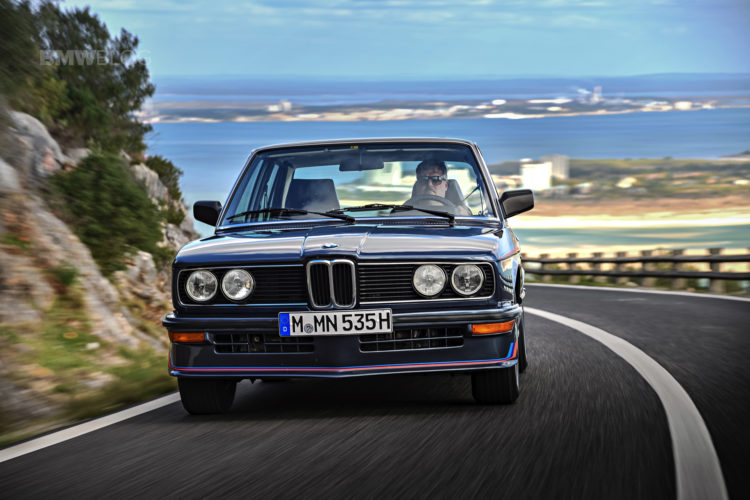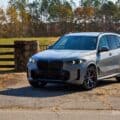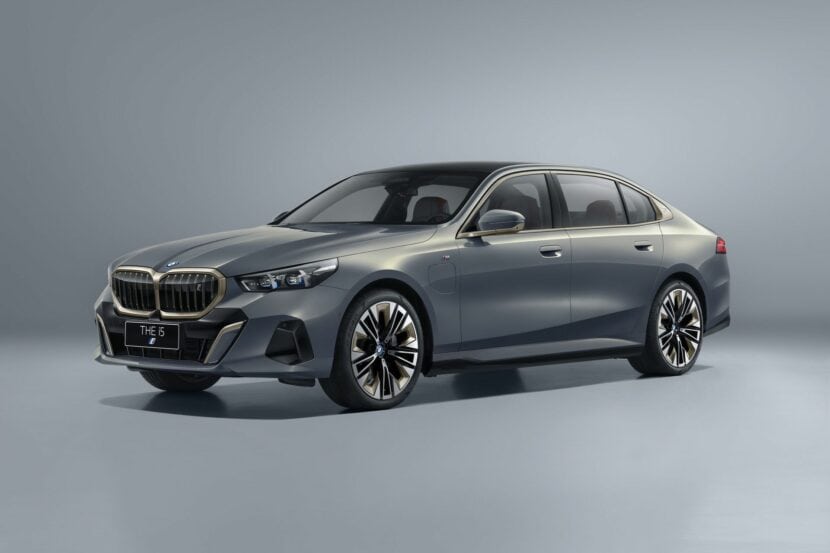The Birth of the BMW E28 535i: From Dingolfing to the Open Road
With all this talk of the first M5 being launched forty years ago this year (well, it was actually January 1985), the E28 535i and its M535i offshoot seem to have been forgotten. Yet, in October 1984, the first European left-hand-drive examples were being built at BMW’s Dingolfing plant, 65 miles northeast of Munich, ready for an ’85 launch. Given how quickly ALPINA produced a fast 3.5-liter version of the E28—about six months—it’s surprising how long it took BMW to do something similar. It’s not as if they hadn’t done it before, either.
The Evolution of BMW’s Motorsport: E12 M535i to E28 M535i

In 1980, BMW Motorsport developed and launched the E12 M535i. This was a 528i but with the running gear from the original full-fat 635CSi. The 218 bhp 3453 cc engine, close-ratio Getrag gearbox with its distinctive ‘dog-leg’ gearshift pattern, limited-slip diff with the extra oil tank, Bilstein dampers with tougher springs and sway bars all went in, as well as 14-inch Mahle lattice alloy wheels with 205-section tires, an M1-style steering wheel, Recaro/Scheel-type front seats, and spoilers front and rear. Between April 1980 and May 1981, when E12 production ended, 960 left-hand-drive cars and 450 right-hand-drive ones were built.
ALPINA’s Influence: How the E28 535i Stood Apart

Until late 1984, E28 buyers had a choice between the factory 184 bhp 528i, the 245 bhp ALPINA B9, or the 260 bhp B10 launched in late ’84 to supplement the B9. ALPINA stuff wasn’t cheap either—in January 1985, when the 535i started to be produced in right-hand-drive form for the UK, a 528iSE cost £15,600, and an ALPINA B10 just under £23,000.
At £17,900 then, the M535i with 218 bhp was seen as something of a snip, almost. Not cheap, but a bloody fast car for the money. For comparison, Audi wanted over £19,250 for its 200 Turbo, which wasn’t as quick but still a fine car.
Comparing the Euro and US-Spec BMW E28 535i Models

The 535i range arrived in Europe with a bang in January 1985 and in the USA a month later—we’ll come to that later. The recipe was as before for the Euro 535i, with a plain 535i version (renamed 535iSE in 1986) and an M535i with plastic sills and bumpers. Mechanically, the 528i’s 184 bhp LE Jetronic engine was replaced by the 3430 cc Motronic 1.1 unit from the contemporary 635CSi with 218 bhp. Unlike the E12, though, a choice of transmissions was offered.
Transmission and Performance: The Heart of the E28 535i

The standard unit was the overdrive Getrag 265/6 ‘box with its 0.81 overdriven fifth gear allied to a 3.07-ratio limited-slip differential with a 25% lockup, although a 3.25 ratio could be had. Those wanting more acceleration in the upper reaches could order the Getrag 265/5 ‘sport’ transmission, whose ratios were closer, with a direct-drive 1:1 fifth gear and the 3.25 ratio LSD.
Lastly, you could have a four-speed ZF automatic with the switchable EH sport/economy electronics to alter the shift speeds and lock out top gear. That’s okay if you like that sort of thing, but really, the manual ‘box is what you wanted. Both differentials were of the Type 210 variety, big heavy things derived from the E23 735i, and cars bound for Australia used a 3.46-ratio diff of the smaller Type 188 kind. I bet they went well.
Suspension and Handling: A White-Knuckle Ride

The 535i suspension was already in production and used in the M Technic package for the 528i—this included Bilstein dampers, shorter stiffer springs, and slightly thicker sway bars. It was very good and certainly tightened up the E28, but it wasn’t cut from the same cloth as ALPINA stuff, nor was it as good as the special suspension BMW Motorsport had developed for the M5. Those cars used even thicker sway bars but softer dampers by Bilstein (and later, Boge) and were far better suited to the Michelin TRX tires being used at that point—by 1986, the M5 had dumped the Michelins and swapped over to far more forgiving Pirellis on a 16-inch wheel.
TRX Tires: The Achilles’ Heel of the BMW E28 535i

Standard 528i brakes with the weird hydraulic servo were used, and they were considered good enough, albeit with standard ABS. The wheels were the unique ventilated metric alloys that only the Euro 535i range had, shod with Michelin TRX 220/55VR390 tires, which proved to be the car’s Achilles’ heel.
As launched, the 535i was available as a standard car with chrome bumpers, stainless trim around the windows, with just the special wheels, the 535i boot script (which could be deleted), and subtle body-color plastic arch spats to distinguish it from the 528i.

Yet it was the M535i with the M Technic body kit that proved to be the bigger seller. This version, like the 535i, was available with all three transmissions as well as a choice of sport or standard front seats. You could order your M535i with either chrome window surround trim or satin black. Common options included air conditioning and cruise control. From late 1986, the 535i became the 535i SE with the option of dechroming and body-color steel bumpers—a great-looking car.
As a car, the 535i could be a fair-weather friend. It was quick—0-100 mph in 18.8 seconds was the mark of a fast car back then, and it’s not bad today. The overdrive version did it in 19.5, and the M5 in a startling 15.4 thanks to 286 bhp. The problem, however, was the wet-weather roadholding.
Michelin makes some great tires, and on many cars, the TRX was exceptional. On the semi-trailing arm BMWs, though, it could be a liability, with sudden and vivid tail slides being its calling card. That, and the sheer cost of replacement, meant that in time, many examples had the special wheels replaced by the likes of BBS with more suitable tires like the Pirelli P7 or any other premium imperial tire.
The TRX—in this case, the 220/55VR390—was later replaced for the E34 535i and post-’88 635CSi by a wider version, the 240/45VR415 from the M6 with some improvement, and the E34 in particular had revised rear suspension geometry to effect a massive improvement. Early examples of the E28 M5, as well as the M635CSi (M6 in the US), used the 390 TRX, yet it worked better thanks to the much-improved roll stiffness. Even so, the M5 had reverted to 225/50VR126 Pirelli imperial tires by 1986.
The US version of the 535i arrived in 1985 in impact-bumper-only form, and no plastic-bumper M535i version was offered. Replacing the 533i, the US 535i had a lower 8.0:1 compression ratio and delivered 180 bhp on unleaded fuel, or slightly less than a Euro 528i. Running a 3.25-ratio version of the smaller Type 188 differential, the cars also used the smaller Michelin TRX wheels and tires from the 528i—the 200/60VR390.
The US 535i also used standard 528i suspension, with the stiffer M Technic setup from Euro cars as an option. While it was better than a 528e or 533i, the US 535i was definitely not the same beast as the Euro car, although it was better equipped as standard—cruise control, onboard computer, leather trim, and almost certainly air conditioning, plus, unfortunately, those dreadful big impact bumpers.
However, in 2024, that’s nothing that cannot be fixed—skim the head to raise the compression ratio, add Bilstein dampers, some decent wheels and tires, plus a Euro bumper conversion kit, and you’ve got a much better chance of finding an E28 in the US that hasn’t been attacked by the inevitable rust worm.
Why the E28 535i Remains a Beloved Classic Today

In Europe, the 535i was a success. BMW talked in 1985 about building 5,000 a year, and they probably did. Changes were few, and the last example built in December 1987 was much the same as the first cars. The E34 535i marked a new era for BMW, and it was undoubtedly a better all-rounder if heavier and a bit slower.
Yet, as good as they are, they don’t have quite the raw appeal of the E28 version, a white-knuckle ride that will now cost you about the same in pounds or dollars as it did around 40 years ago.
[Images: BMW Classic]






































































































